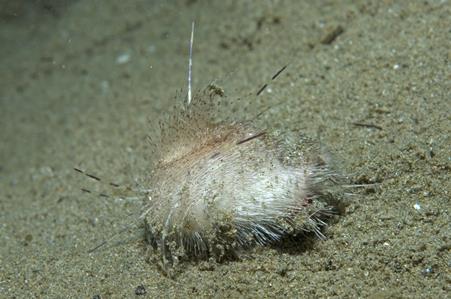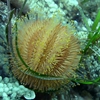General Description
It has a shallow anterior notch in the test, and uses special funnel-building spines to construct and maintain a funnel for circulating oxygenated water over the surface of the animal. It possesses a sub-anal fasciole that has four pore pairs in each side. Test diameter up to 6 cm.
Biology
This heart urchin uses special spines to construct and maintain a funnel in the sand to enable oxygenated water to circulate over its body while it is buried. It is possibly the world's most widely distributed heart urchin.
Habitat
Buried in sand, to depth of 100 m.
Soft substrates
Distribution guide
Worldwide. Southern Australia.
Species Group
Depth
Shore (0-1 m)
Shallow (1-30 m)
Deep ( > 30 m)
Water Column
Max Size
6 cm
Diet
Herbivore
Harmful
Spines can puncture skin. Venom status unknown.
Commercial Species
No
Global Dispersal
Native to Australia
Species Code
MoV 900
Identify
Conservation Status
- DSE Advisory List : Not listed
- EPBC Act 1999 : Not listed
- IUCN Red List : Not listed







